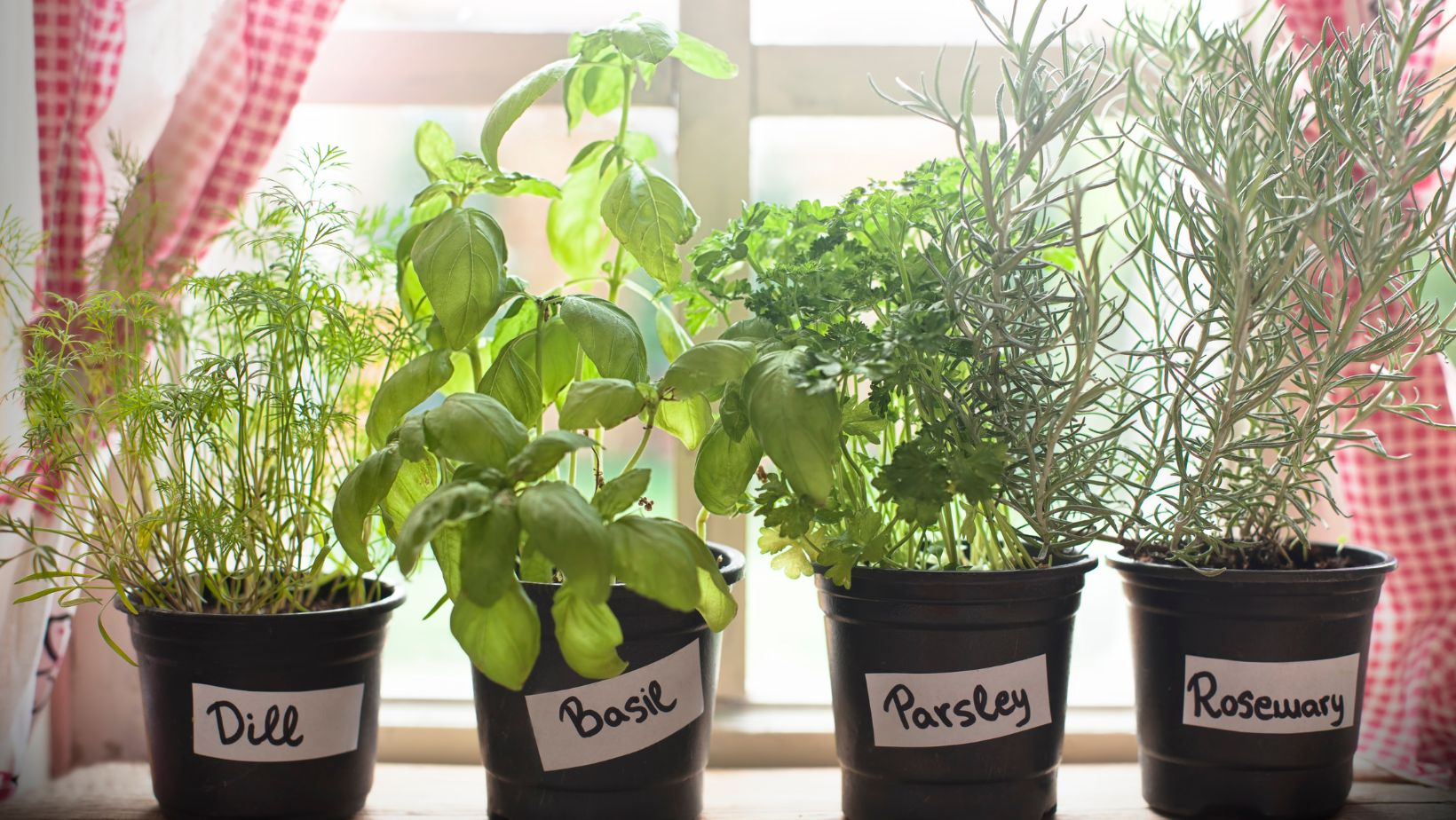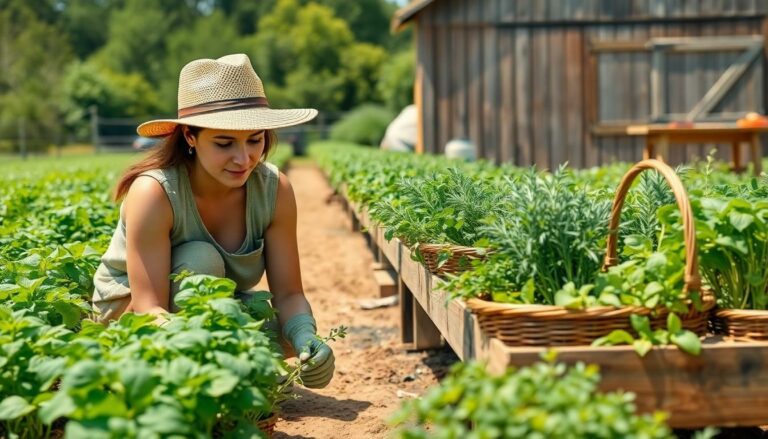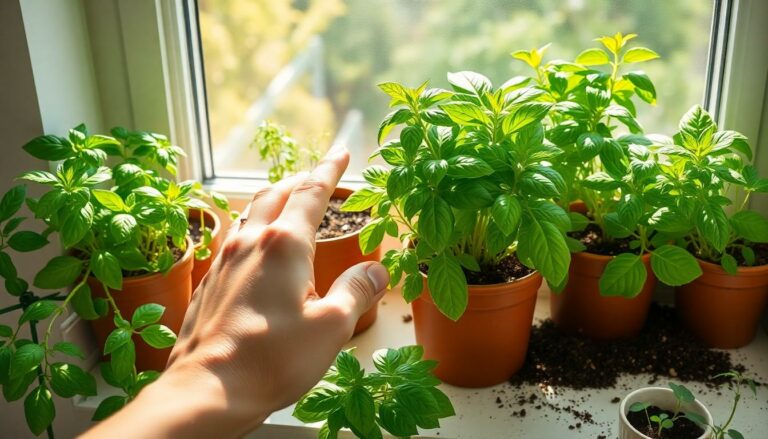Imagine stepping into your kitchen and plucking fresh basil or mint straight from your windowsill. Herb cultivation isn’t just a hobby; it’s a ticket to culinary bliss and a dash of green in your life. Growing your own herbs transforms cooking from a chore into a delightful adventure, where every meal can be a gourmet experience.
Herb Cultivation
Herb cultivation offers both culinary advantages and aesthetic benefits. Growing herbs like basil, mint, and rosemary transforms cooking experiences with fresh ingredients. Many people find that unique flavors enhance their meals significantly. Herbs thrive in various environments, including indoor pots and outdoor gardens.
Selecting the right herbs for cultivation often depends on personal preference and climate. Some popular choices for beginners include parsley, cilantro, and chives. These herbs grow quickly and require minimal maintenance. Focusing on light, soil, and water needs is crucial for successful growth.
Light conditions vary for different herbs; some need full sunlight while others prefer partial shade. Using quality potting soil enhances overall growth and development. Watering requirements differ as well; overwatering can lead to root rot while underwatering can stunt growth.
Harvesting herbs brings additional joy to the cultivation process. Regular trimming encourages bushier plants and boosts overall yields. Using fresh herbs immediately after harvesting maximizes flavor and nutrients. Incorporating herbs into dishes elevates flavors and adds freshness.
Cultivating herbs serves as an accessible entry point to gardening. Many individuals take pride in growing their own ingredients. Engaging in herb cultivation provides a rewarding and enriching experience, enriching both culinary practices and personal well-being.
Benefits of Growing Herbs
Growing herbs at home offers multiple benefits, enhancing both health and culinary experiences. Cultivators enjoy the freshness and convenience of having aromatic ingredients within reach.
Nutritional Advantages
Herbs provide vital nutrients that enhance overall health. Basil, for instance, is rich in antioxidants and contains vitamins A, C, and K. Parsley aids digestion and offers a significant amount of vitamin C. Oregano boasts antimicrobial properties and contributes essential oils that support immune function. These nutritional benefits encourage a balanced diet and attract health-conscious individuals.
Culinary Uses
Herbs transform ordinary meals into extraordinary dishes. Fresh basil elevates sauces and salads, while rosemary adds depth to roasted meats and vegetables. Mint brightens beverages and desserts, creating refreshing flavors. Cooking with herbs enhances taste profiles without additional calories, making meals more appealing. Home cooks find that experimenting with various herbs introduces exciting dimensions to recipes.
Choosing the Right Herbs
Selecting herbs for cultivation involves considering culinary and medicinal uses. Some herbs are easy to grow and provide significant benefits.
Popular Culinary Herbs
Basil thrives in warm weather and enhances dishes with its aromatic flavor. Mint adds freshness and works well in salads and drinks. Parsley serves as a versatile garnish or ingredient in various recipes. Cilantro contributes unique flavor profiles, especially in salsas and sauces. Chives bring a mild onion taste to dishes and are easy to maintain. Rosemary’s robust aroma complements roasted meats and vegetables. These culinary herbs are excellent choices for both beginners and experienced gardeners.
Medicinal Herbs
Lavender has calming effects and aids in reducing stress. Chamomile is well-known for its sleep-inducing properties and can promote relaxation. Echinacea serves as an immune booster, often used to fight colds. Peppermint aids digestion and provides a refreshing scent. Ginger works as an anti-inflammatory and can alleviate nausea. Growing these medicinal herbs offers not just health benefits but also enhances one’s gardening experience.
Cultivation Techniques
Effective herb cultivation depends on proper techniques that optimize growth and yield.
Soil Preparation
Preparing soil involves selecting a well-draining mix that supports herb growth. Organic matter, such as compost, enhances soil fertility and structure. Testing soil pH ensures it’s in the 6.0 to 7.0 range for most herbs. Mixing in perlite or sand increases aeration, preventing root rot. Planting directly into raised beds or containers allows for better control of soil conditions.
Watering and Fertilization
Watering herbs needs careful attention to avoid over-saturation. A consistent watering schedule emphasizes moisture without flooding. Allowing soil to dry slightly between waterings encourages root development. Fertilization bi-weekly with a balanced organic fertilizer supports growth during active seasons. Adjusting fertilization frequency based on herb type ensures optimal nutrient uptake for flavors and yields.
Pest Management
Managing pests requires vigilance to maintain healthy plants. Regularly inspecting for aphids, spider mites, and whiteflies minimizes infestations. Introducing beneficial insects, such as ladybugs, provides natural pest control. Using insecticidal soap helps treat outbreaks while being gentle on plants. Implementing crop rotation and companion planting reduces pest populations and promotes a thriving herb garden.
Harvesting and Storing Herbs
Harvesting herbs at the right time ensures peak flavor and aroma. Harvesting occurs when the plants reach a height of at least six inches or just before flowering for optimal taste. Shearing leaves encourages new growth, making plants bushier and more productive.
Timing for harvest also depends on the type of herb. For basil, cutting just above the leaf node promotes fullness. Mint is best picked before it flowers; this maximizes its refreshing flavor. Rosemary should be harvested as necessary, trimming no more than a third of the plant to allow for continued growth.
Once harvested, proper storage is critical to maintain freshness. Storing herbs in a cool, dark place prolongs their life. Fresh herbs fare best wrapped in a damp paper towel and placed in a sealed bag in the refrigerator. Alternatively, one can place stems in a glass of water, covering them loosely with a plastic bag.
Drying herbs serves as another efficient storage method. Air drying works well for sturdy herbs like oregano and thyme. Hanging them upside down in a warm, dark area aids in moisture removal. For quicker drying, using a dehydrator or an oven on low heat provides efficiency while preserving flavors.
Freezing herbs retains their essence and avoids waste. Chopping herbs, filling ice cube trays with them, and adding a little water or oil creates handy flavor cubes. This method is particularly effective for herbs like parsley and cilantro, which infuse dishes with vibrant taste even when frozen.
Utilizing these harvesting and storage methods ensures homegrown herbs remain flavorful and aromatic.
Greener Lifestyle
Herb cultivation offers a fulfilling way to enhance both culinary experiences and personal well-being. By growing fresh herbs at home, individuals can enjoy the rich flavors and health benefits that come from using organic ingredients. The process of nurturing plants not only brings joy but also encourages creativity in the kitchen.
Whether it’s the fragrant basil or the refreshing mint, each herb adds a unique touch to meals. With simple techniques and a bit of patience anyone can transform their cooking and gardening skills. Embracing herb cultivation can lead to a greener lifestyle and a deeper connection to food.





